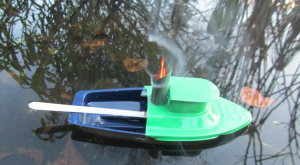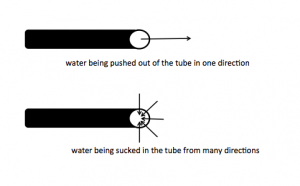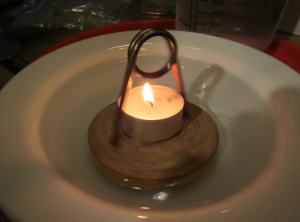A pop pop boat in action!
Following up on the steam-powered spinning top we talked about earlier, today we have a steam-powered pop pop boat.
The mechanism is exactly the same as for the spinning top, except the boat is propelled forward rather than spinning around its own axis.

Tiny candle on spoon heats up water tank that is connected to the tubes that come out at the stern of the boat, driving the boat forward.
Since the water that is pressed out of the tube is being sucked back in one might wander why the boat is still driving forward rather than driving forward and then being pulled backwards when the water is pulled back up into the tube. Here is why:
Water coming out of the tube is pushed mainly backward, water sucked in is sucked in from many different directions. An analogy that someone told me about is that it is fairly easy to blow out a candle that is some distance away, whereas it is really really difficult (probably impossible) to suck it out from the same distance.
Watch the movie to see the boat drive around:
[vimeo 115379711]



